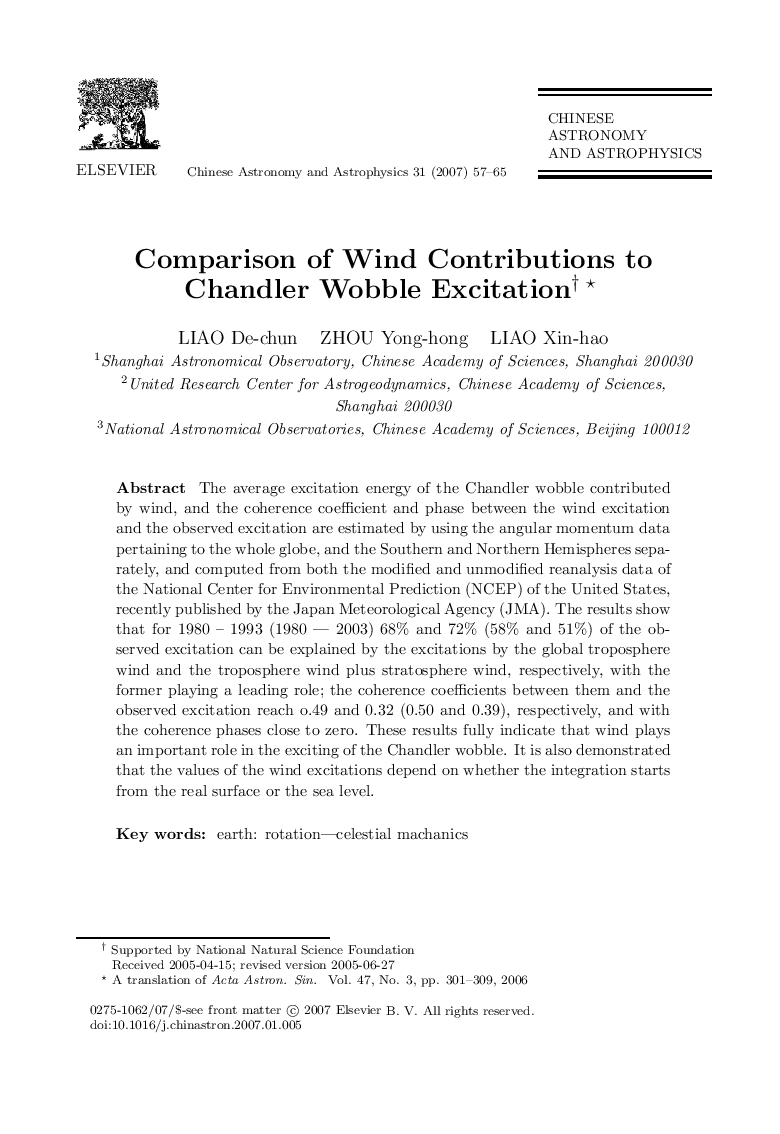| Article ID | Journal | Published Year | Pages | File Type |
|---|---|---|---|---|
| 1772119 | Chinese Astronomy and Astrophysics | 2007 | 9 Pages |
The average excitation energy of the Chandler wobble contributed by wind, and the coherence coefficient and phase between the wind excitation and the observed excitation are estimated by using the angular momentum data pertaining to the whole globe, and the Southern and Northern Hemispheres separately, and computed from both the modified and unmodified reanalysis data of the National Center for Environmental Prediction (NCEP) of the United States, recently published by the Japan Meteorological Agency (JMA). The results show that for 1980–1993 (1980–2003) 68% and 72% (58% and 51%) of the observed excitation can be explained by the excitations by the global troposphere wind and the troposphere wind plus stratosphere wind, respectively, with the former playing a leading role; the coherence coefficients between them and the observed excitation reach 0.49 and 0.32 (0.50 and 0.39), respectively, and with the coherence phases close to zero. These results fully indicate that wind plays an important role in the exciting of the Chandler wobble. It is also demonstrated that the values of the wind excitations depend on whether the integration starts from the real surface or the sea level.
